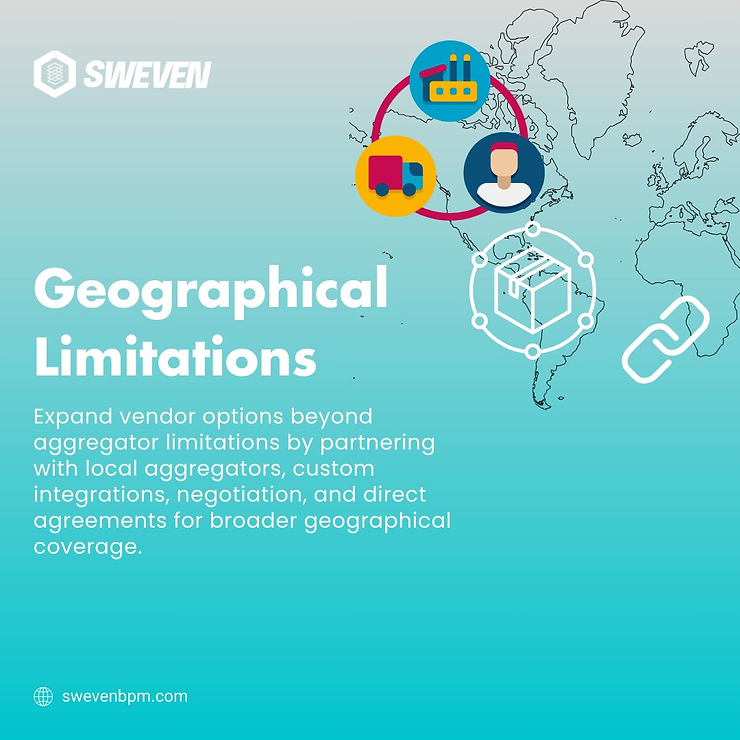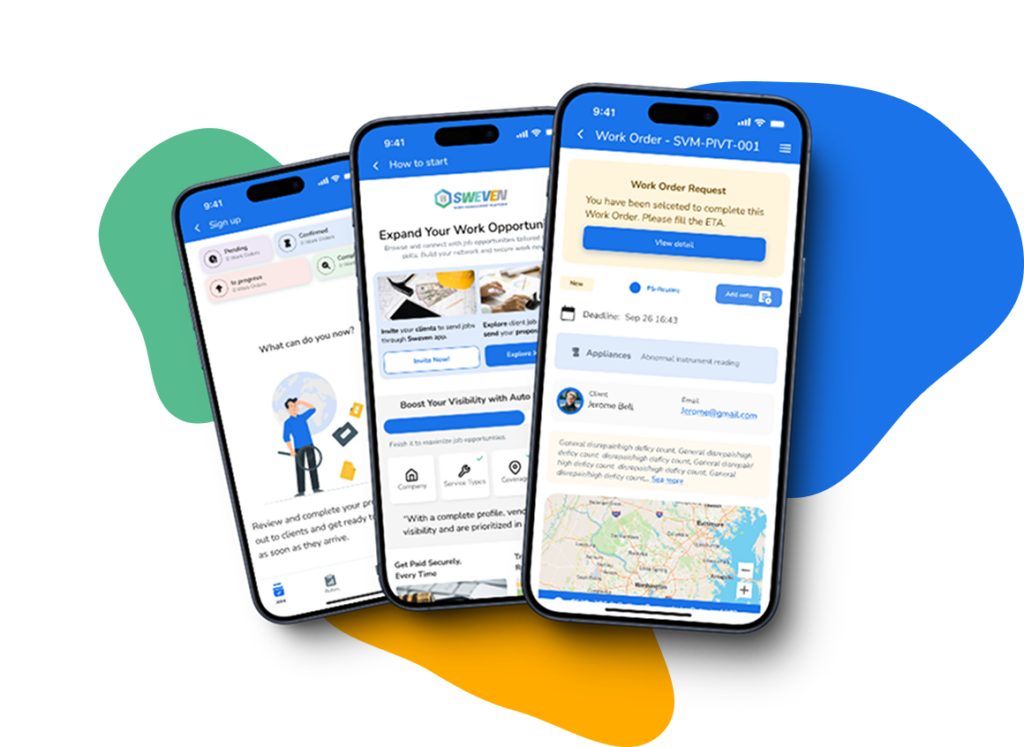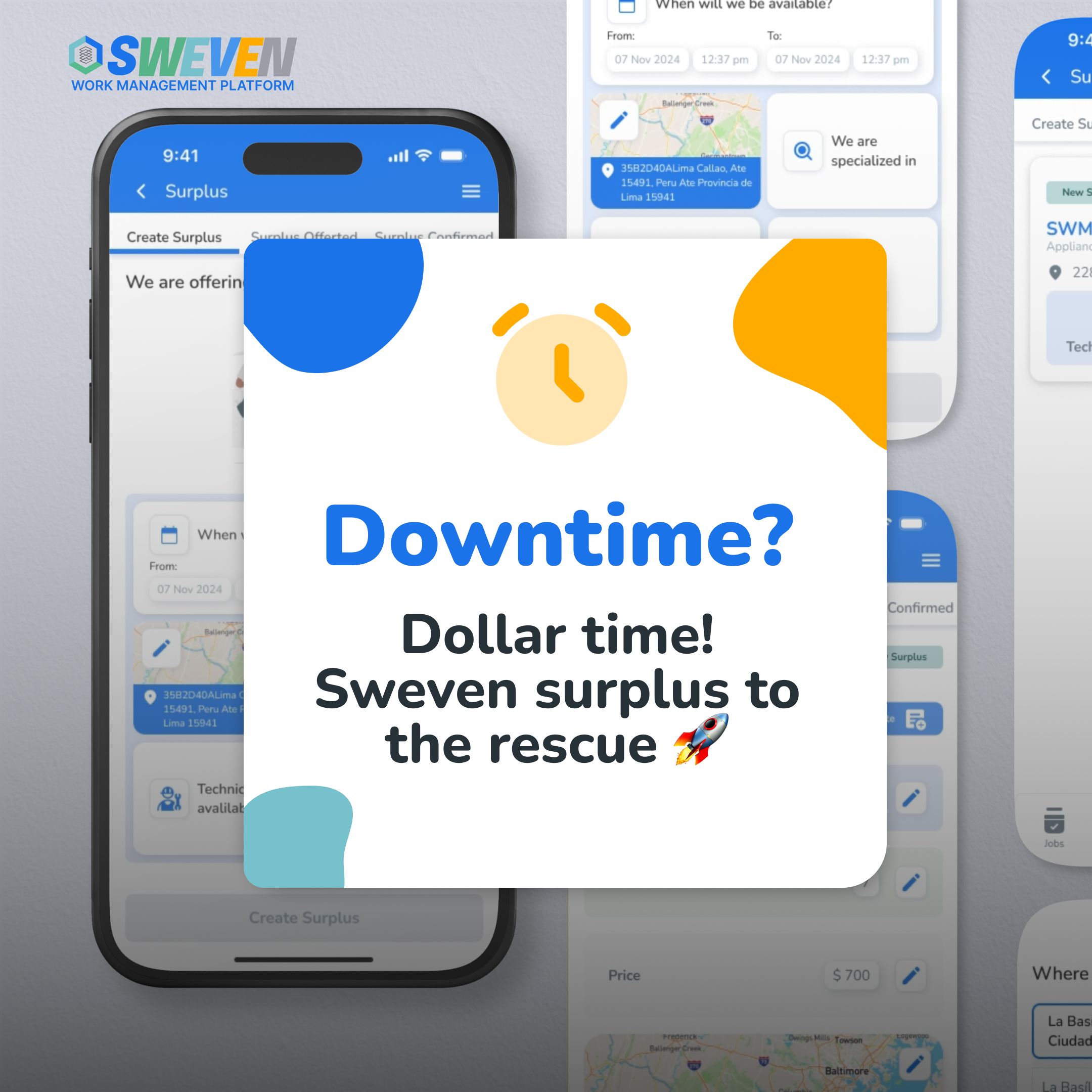In the interconnected world of modern business, the use of aggregator platforms has become commonplace, streamlining vendor management and procurement processes. However, these platforms may present challenges when it comes to geographical coverage, limiting the options available to businesses. Overcoming these geographical limitations is essential for accessing a diverse pool of vendors and ensuring a robust and resilient supply chain. In this blog, we will explore a multi-pronged approach to expand vendor options and mitigate the impact of geographical constraints imposed by aggregators.

The Challenge of Geographical Limitations:
Aggregator platforms, while powerful tools for vendor management, often have limitations in terms of geographical coverage. This can be a significant hurdle for businesses seeking a broad and diverse range of vendors, especially in regions not adequately served by their primary aggregator.
Multi-Pronged Approach:
To overcome geographical limitations and broaden vendor options, businesses can adopt a multi-pronged approach that combines various strategies to ensure a comprehensive and effective solution.
1. Explore Partnerships with Local or Regional Aggregators:
Engage with local or regional aggregators that specialize in areas not covered by your primary aggregator. Establishing partnerships with these specialized platforms can provide access to a wealth of vendors in specific regions, ensuring that your business can tap into local expertise and resources.
2. Invest in Custom Integration Solutions:
Develop custom integration solutions to directly connect with vendors in underserved regions. By investing in technology that facilitates seamless transactions with vendors outside the coverage of your primary aggregator, you can bypass geographical limitations and directly engage with suppliers in specific areas.
3. Negotiate with Your Primary Aggregator:
Initiate negotiations with your primary aggregator to incentivize them to extend their services to include the regions of interest. Highlight the potential benefits of expanding their coverage, such as increased business opportunities and a more satisfied customer base. Collaborative discussions can lead to mutually beneficial solutions.
4. Diversify Vendor Sourcing Strategies:
Consider diversifying your vendor sourcing strategy by exploring direct vendor agreements in regions where aggregators are unavailable. This may involve establishing direct relationships with suppliers, conducting independent vendor assessments, and creating a more resilient supply chain that isn’t solely reliant on aggregator platforms.
–
Geographical limitations imposed by aggregator platforms need not be insurmountable obstacles for businesses seeking a diverse and robust vendor base. By adopting a multi-pronged approach that includes partnerships with local aggregators, custom integration solutions, negotiations with primary aggregators, and a diversified sourcing strategy, businesses can overcome these challenges and expand their vendor horizons. This proactive and strategic approach not only ensures access to a broader geographic reach but also enhances the resilience and flexibility of the supply chain, contributing to the overall success of the business.
















